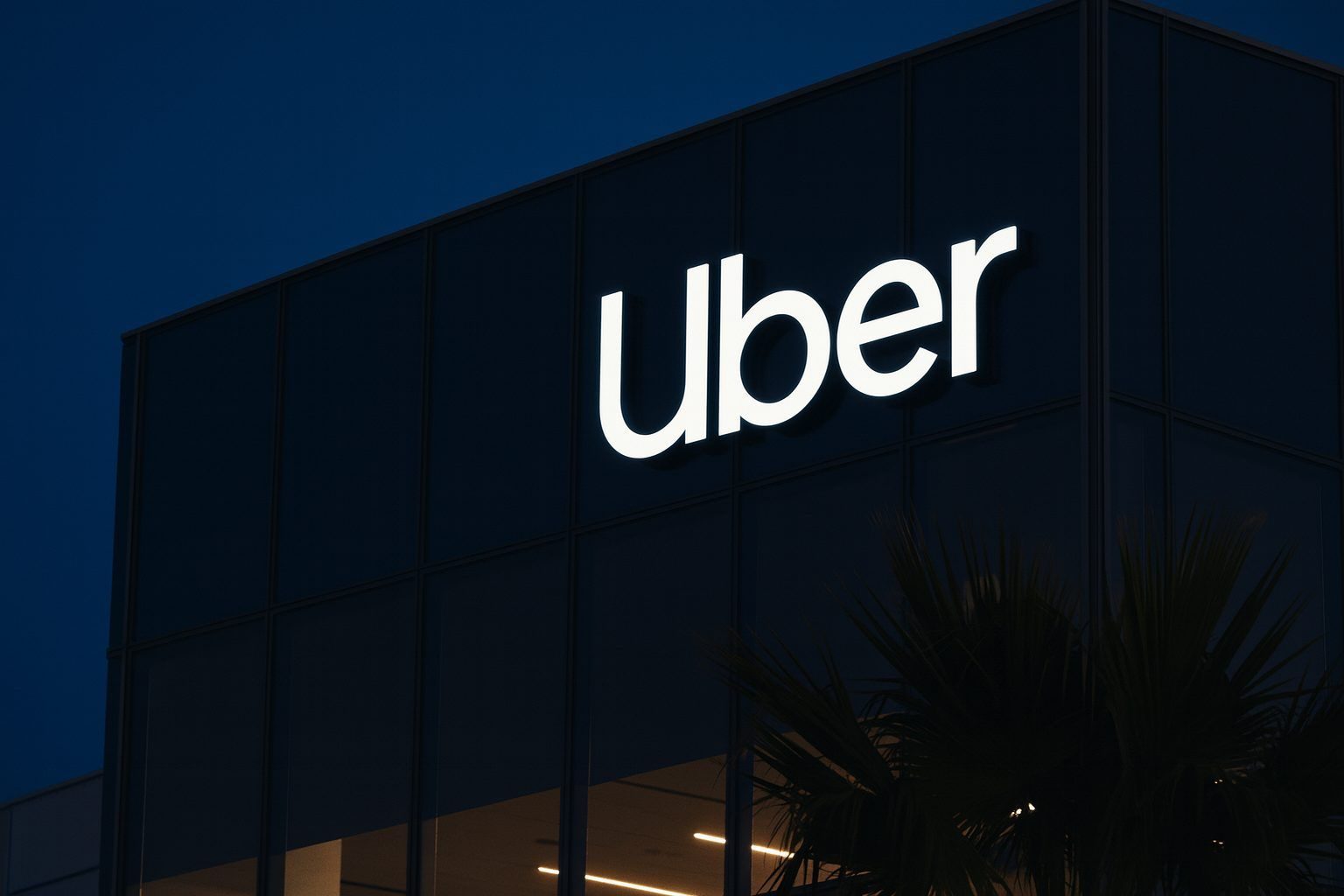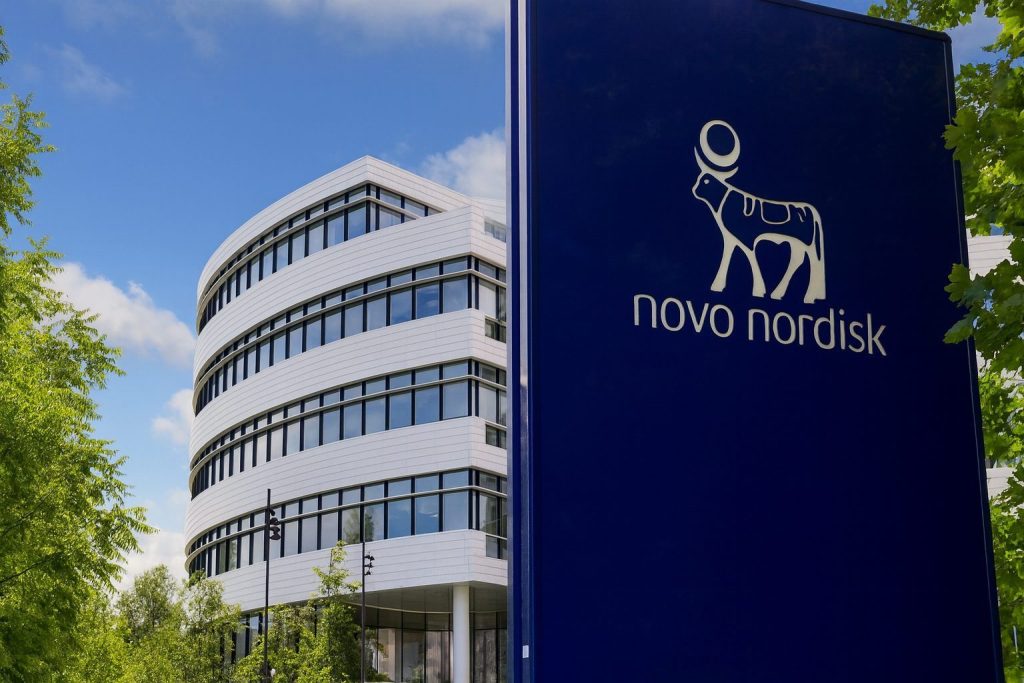Uber Technologies, Inc. (NYSE: UBER) ended Wednesday, November 26, 2025 on a stronger note as investors digested a burst of positive headlines: the launch of fully driverless robotaxis in Abu Dhabi, a more upbeat credit outlook from S&P Global Ratings, and renewed bullishness from Wall Street analysts.
In late U.S. trading, Uber shares were changing hands around $86 – roughly 3% higher on the day, with volume above 14 million shares. That puts the stock about 45% above its 12‑month low near $59 and roughly 15% below its 52‑week high just under $102. [1]
Below is a breakdown of everything moving Uber stock today and how it fits into the bigger investment story.
Uber stock today: price action and technical backdrop
- Last trade (late afternoon, Nov. 26): about $86.28
- Intraday range: roughly $83.7–$86.3
- Volume: ~14.4 million shares, in line with recent averages
On a 12‑month view, Uber now sits:
- About 45% above its 52‑week low (~$59.33)
- About 15% below its 52‑week high (~$101.99) [2]
MarketBeat data show a trailing P/E ratio around 10–11, with a market capitalization near $174 billion and a beta above 1.4, underlining that UBER tends to move more than the broader market. [3]
Technically, the stock has been under pressure for most of November, dipping below its 200‑day moving average for the first time since spring. CNBC’s Jim Cramer described Uber as “a good stock” with “a horrendous chart,” arguing that weaker holders may still be exiting after the post‑earnings drop but that a durable bottom could form once the selling exhausts. [4]
Benzinga’s technical team went a step further today, naming Uber their “Stock Of The Day,” arguing that the shares look oversold and sitting on support, conditions that could help fuel a new uptrend if buying interest persists. [5]
S&P revises Uber’s outlook to “positive”
One of the most market‑relevant headlines today came from S&P Global Ratings. The agency revised Uber’s credit outlook to “positive” from “stable” while affirming its current rating. [6]
Key points from S&P’s note:
- S&P highlighted Uber’s leading platform and “proven operational framework” as drivers of healthy organic gross bookings growth.
- In Q3 2025, Uber delivered:
- 22% year‑over‑year trip growth,
- 17% growth in monthly active platform consumers to 189 million,
- Higher average trip frequency. [7]
- S&P expects gross bookings to exceed $190 billion in 2025, broadly aligned with Uber’s Q4 guidance of 17–21% constant‑currency bookings growth. [8]
- The agency forecasts adjusted free operating cash flow of about $5.9 billion in 2025 and $7.2 billion in 2026, and sees leverage (adjusted debt/EBITDA) falling below 1.5x, versus Uber’s own long‑term target of 2x. [9]
- Uber has committed to returning around 50% of annual free operating cash flow to shareholders, mainly through share buybacks. [10]
S&P also flagged Uber’s growing ecosystem around autonomous vehicles (AVs), citing partnerships with Waymo, Lucid, and NVIDIA, while noting that AV technology is still a long‑term risk that shouldn’t materially affect Uber’s credit profile over the next couple of years. [11]
Importantly for equity holders, a “positive” outlook signals that an upgrade (potentially to BBB+) is on the table if Uber maintains high‑teens bookings growth, generates over $7 billion in annual free operating cash flow, and keeps leverage below 1.5x. That would further lower the company’s cost of capital and strengthen the case for sustained buybacks.
Abu Dhabi robotaxis: a showcase for Uber’s autonomous ambitions
The other big story for UBER today is firmly in the “future growth” bucket.
Uber and Chinese autonomous‑driving specialist WeRide announced the launch of Level 4 fully driverless robotaxi commercial operations in Abu Dhabi, backed by what they describe as the world’s first city‑level fully driverless robotaxi permit outside the U.S. [12]
Highlights from Uber’s own press release and related coverage:
- Abu Dhabi becomes the first city outside the U.S. to host fully driverless operations on the Uber platform.
- Public commercial service starts on Yas Island, with expansion planned into more of the city core by year‑end.
- Riders booking UberX, Uber Comfort, or a new “Autonomous” category can be matched with a WeRide robotaxi without a safety driver in the vehicle. [13]
- WeRide currently operates over 100 robotaxis in the Middle East and has a four‑year first‑mover advantage in Abu Dhabi, with national licenses that cover all types of self‑driving vehicles in the UAE (subject to local approvals). [14]
- The partners say that with the latest permits and improving utilization, the Abu Dhabi service is on track to reach breakeven unit economics, and they ultimately plan to scale to thousands of robotaxis in the region. [15]
Simply Wall St framed the launch as a potential shift in Uber’s autonomous strategy, arguing that:
- The deployment expands Uber’s AV footprint internationally,
- Signals accelerating regulatory openness to self‑driving mobility, and
- May slowly reshape the long‑term investment narrative even though the immediate financial impact is small. [16]
From a stock perspective, the Abu Dhabi robotaxi debut reinforces a theme that several analysts (including RBC Capital Markets) have been hammering: autonomy and automation as medium‑term margin levers, not just flashy tech. [17]
Wall Street remains bullish: BofA, RBC and consensus targets
Despite November’s volatility, sell‑side sentiment on Uber is still overwhelmingly positive.
New and recent calls
- Bank of America Securities reiterated a Buy rating on Uber with a $119 price target on November 23. Today’s recap of that call, published via Insider Monkey/Finviz, highlights:
- 22% trip growth to 3.5 billion trips in Q3,
- 20% revenue growth to about $13.5 billion,
- 21% growth in gross bookings to $49.7 billion,
- Strong Q4 guidance for gross bookings growth of 17–21%. [18]
- RBC Capital Markets recently raised its price target to $110 from $100 while keeping an Outperform rating, calling Uber one of the most profitable large‑cap stocks in its coverage and praising the consistency of core fundamentals and the narrative around AV technology. [19]
- A fresh Motley Fool piece today listed Uber among “4 no‑brainer stocks to buy now,” noting the stock’s strong gains this year and its positioning in global mobility. [20]
Consensus numbers
Data from Quiver Quantitative and MarketBeat show:
- At least 20 major firms rate UBER a Buy or equivalent, with no active Sell ratings reported in recent months. [21]
- 26 analysts have issued price targets in the last six months, with a median around $110 and MarketBeat’s average near $108 – implying roughly 25–30% upside from today’s price if those targets prove accurate. [22]
Of course, those targets are not guarantees – but they underline how strongly the Street still believes in Uber’s ability to turn its scale into durable cash flow.
Fundamentals check: Q3 2025 results and outlook
Today’s optimism is anchored in a Q3 report that was operationally strong but financially messy because of legal and regulatory charges.
From Uber’s Q3 press release and Reuters’ coverage: [23]
- Trips:
- 3.5 billion, +22% YoY (fastest growth rate since 2023).
- Monthly Active Platform Consumers (MAPCs):
- 189 million, +17% YoY.
- Gross bookings:
- $49.7 billion, +21% YoY.
- Revenue:
- $13.47 billion, +20% YoY, beating Wall Street estimates (~$13.28 billion).
- Income from operations:
- About $1.1 billion, up 5% YoY but below expectations, largely due to significant legal, tax and regulatory expenses.
- Net income:
- $6.6 billion, inflated by a $4.9 billion tax valuation allowance release and gains on equity investments.
- Adjusted EBITDA:
- $2.26 billion, +33% YoY, with margins expanding to 4.5% of gross bookings.
Segment trends were solid:
- Mobility revenue: +20% YoY
- Delivery revenue: +29% YoY, again outgrowing rides
- Freight: flat, still the weakest piece of the portfolio [24]
For Q4 2025, Uber guided to:
- Gross bookings of $52.25–$53.75 billion (17–21% YoY growth),
- Adjusted core profit of $2.41–$2.51 billion. [25]
The bookings outlook was slightly ahead of consensus, but the profit guidance struck some investors as cautious, especially in light of the big legal charge in Q3. That disappointment helped drive the early‑November sell‑off which Uber shares are only now trying to recover from.
Legal, regulatory and AI‑related overhangs
Today’s QuiverQuant summary and recent press reports make it clear that legal risk is front‑and‑center in the Uber story again. [26]
Q3 legal hit
- Uber’s Q3 operating profit missed expectations as the company booked hundreds of millions of dollars in legal, regulatory and tax‑related costs, including a widely reported $479 million legal charge that compressed profit despite strong growth. [27]
AI‑driven pay systems under fire
Over the past week, a wave of coverage has focused on a proposed collective legal action in Europe targeting Uber’s AI‑driven dynamic pay and pricing systems:
- Non‑profit group Worker Info Exchange (WIE) has issued a legal “letter before action” to Uber’s European HQ in Amsterdam, alleging that its AI‑based pay systems harm driver incomes and lack transparency, potentially breaching data protection law (GDPR). [28]
- The group is seeking to halt the current AI pay model and may pursue collective proceedings on behalf of drivers in the UK and EU if Uber does not change course.
- Related commentary and union‑linked reports claim driver pay has stagnated or fallen since the introduction of dynamic pricing, while Uber’s share of fares has increased – claims the company disputes. [29]
QuiverQuant notes that this legal tension has become a hot topic on social media, with some investors worrying that regulatory backlash against AI‑based pay could pressure margins or force business model changes in key European markets. [30]
Allegations over taxi‑app pricing
Separately, a proposed class action filed in Manhattan federal court this week accuses several traditional taxi‑hailing app companies of colluding with Uber to inflate fares in major U.S. cities after integrating their services with Uber’s platform. Uber itself is not a named defendant in the case, but the complaint alleges that the 2022 integration helped produce “uniform or near‑uniform pricing” across rides, reducing competition and raising prices. [31]
Regulators and courts will ultimately decide whether those claims have merit. For shareholders, the case is another reminder that pricing power in ride‑hailing sits under constant legal and political scrutiny.
AI workforce optics
Finally, Business Insider reported today that Uber abruptly terminated contracts for a group of highly qualified AI contractors working on “Project Sandbox,” an initiative under which Uber was training AI systems for a major client believed to be Google. Contractors were initially told they had at least three months of work, only to be informed after about a month that their assignments were ending, with first paychecks still pending. [32]
While this is a relatively small story in financial terms, it plays into broader debates about how big tech firms treat workers in the AI supply chain – an ESG consideration some institutional investors track closely.
What “smart money” is doing with Uber
QuiverQuant’s aggregation of regulatory filings and trading data shows a mixed but active institutional and insider picture around UBER: [33]
- Over the most recent quarter, 1,466 institutional investors increased their positions, while 920 reduced holdings.
- Big moves included:
- Some large holders such as Kingstone Capital and Wellington Management cutting positions,
- Others like UBS Asset Management, Polen Capital and Pacer Advisors adding millions of shares.
- MarketBeat reports today that:
- Boston Partners now holds about $852.8 million of UBER after modestly increasing its stake, and
- The Employees Retirement System of Texas lifted its position by 6.4% in Q2. [34]
- On the insider side, QuiverQuant tracks 17 insider trades over the last six months, of which 16 were sales and just 1 was a purchase. CEO Dara Khosrowshahi alone sold around 450,000 shares (roughly $44 million worth) over that period, while the CFO and several senior executives also sold stock. [35]
Insider selling doesn’t automatically mean trouble – executives often sell for diversification or tax reasons – but the skew toward sales may contribute to some of the “confidence gap” noted in recent commentary.
How today’s news fits into the Uber investment story
Putting it all together, here’s how today’s developments interact with the ongoing Uber thesis.
Bullish forces in play
1. Scale and growth still look impressive
- High‑teens to low‑20s growth in trips, gross bookings and revenue suggests that Uber is still in expansion mode, not stagnation. [36]
2. Profitability and cash generation are real, not hypothetical
- Uber is now posting billion‑dollar operating income and multi‑billion‑dollar free cash flow, even after heavy investment in new categories. [37]
- S&P’s positive outlook and cash flow forecasts reinforce the idea that Uber’s “cash engine” is switched on.
3. Autonomy and automation give Uber optionality
- The Abu Dhabi robotaxi launch and prior announcements around delivery robots and AV partnerships (including NVIDIA and Waymo) show Uber methodically building a multi‑modal autonomous ecosystem. [38]
- If AV economics work, they could compress driver costs over time, improving margins – though the timeline remains uncertain.
4. Wall Street and many institutions are still on Uber’s side
- Price targets clustered in the $108–$119 range imply meaningful upside versus today’s mid‑$80s share price.
- A large base of Buy ratings, combined with major institutions holding or increasing stakes, supports the case that Uber remains a core growth holding for many portfolios. [39]
Key risks investors are weighing
1. Legal and regulatory uncertainty
- The Q3 legal hit shows how quickly courtrooms and regulators can change the earnings picture, even in a strong operational quarter. [40]
- AI‑driven pay systems and alleged anti‑competitive pricing arrangements are now under heightened scrutiny in both Europe and the U.S. [41]
2. Execution risk in autonomy
- Robotaxis and delivery robots are exciting but capital‑intensive, and the near‑term financial contribution from Abu Dhabi is modest. Mis‑steps or slower‑than‑expected adoption could weigh on returns. [42]
3. Sentiment and technical overhang
- The stock’s sharp pullback after earnings, heavy insider selling, and drop below the 200‑day moving average have left some investors gun‑shy, even as fundamentals improve. [43]
Bottom line
For November 26, 2025, Uber stock is trading higher as the market focuses on three intertwined themes:
- Stronger balance sheet optics – S&P’s shift to a positive outlook and the prospect of a future rating upgrade.
- Future‑of‑mobility narrative – the Abu Dhabi robotaxi launch puts Uber’s AV ambitions back in the spotlight.
- Persistent but manageable friction – legal challenges, regulatory scrutiny and technical weakness that keep some investors cautious.
Whether UBER is attractive at today’s price will depend on your view of:
- How durable that high‑teens growth really is,
- How much legal/regulatory risk you’re comfortable underwriting, and
- How much you believe in Uber’s ability to turn autonomy and local commerce into higher‑margin, capital‑efficient growth rather than a cash drain.
References
1. www.marketbeat.com, 2. www.marketbeat.com, 3. www.marketbeat.com, 4. www.insidermonkey.com, 5. www.benzinga.com, 6. ca.investing.com, 7. ca.investing.com, 8. ca.investing.com, 9. ca.investing.com, 10. ca.investing.com, 11. ca.investing.com, 12. investor.uber.com, 13. investor.uber.com, 14. investor.uber.com, 15. investor.uber.com, 16. simplywall.st, 17. www.insidermonkey.com, 18. finviz.com, 19. www.insidermonkey.com, 20. www.fool.com, 21. www.quiverquant.com, 22. www.quiverquant.com, 23. investor.uber.com, 24. investor.uber.com, 25. investor.uber.com, 26. www.quiverquant.com, 27. www.reuters.com, 28. www.theguardian.com, 29. www.theguardian.com, 30. www.quiverquant.com, 31. www.reuters.com, 32. www.businessinsider.com, 33. www.quiverquant.com, 34. www.marketbeat.com, 35. www.quiverquant.com, 36. investor.uber.com, 37. investor.uber.com, 38. investor.uber.com, 39. www.quiverquant.com, 40. www.reuters.com, 41. www.theguardian.com, 42. simplywall.st, 43. www.insidermonkey.com







